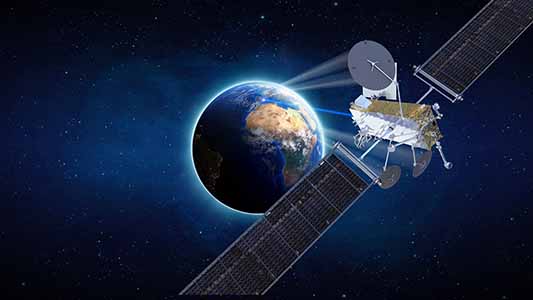Thales Alenia Space, the joint venture between Thales (67%) and Leonardo (33%), and its partners are pleased to announce that the VERTIGO project has concluded with the successful demonstration of a high-power optical data transmission system at the Thales laboratory in Palaiseau, France. This is a key success for the development of future geostationary communication satellites using optical feeder links to increase significantly the capacity currently available. These solutions will play a key role to bridge the digital divide and provide broadband connectivity for all by 2025. The objective is also to boost satellites capacity in order to reduce the number of satellites required to meet the users demand.
In this frame, Thales Alenia Space, Thales, G&H and Leo Space Photonics R&D demonstrated the generation and transmission of optical communication signals carrying data at 25 Gbps in a controlled environment at a record breaking optical power of 97 W opening the way to 100W-class transmissions. This was achieved by splitting a modulated optical signal into two paths, each amplified through an individual state-of-the-art G&H high power amplifier, and then coherently combining the two amplifier outputs. This was an opportunity not only to demonstrate high and very high optical power generation but also to prove the possibility to transmit telecom signals at very high power while maintaining data integrity, a necessary condition for use in free-space optical links over long distances.
Following the outdoor trials of free-space optical links in Summer 2022, which notably demonstrated a record transmission at 1 Tbps over an atmospheric optical path of 53 km, the laboratory test campaign performed in Thales facilities concludes the VERTIGO project with a new record.
Capitalizing on the results of the VERTIGO project, the next step will be to target a full-scale coherent laser link between a geostationary satellite at an altitude around 36.000 km and a ground station.
Next generation satellite systems will play a key role to bridge the digital divide and offer broadband connectivity for all by 2025. In this context, optical feeder links are considered as a very promising technology to meet the future VHTS system requirements. VERTIGO ambitions to pave the way towards very high throughput satellite systems and contribute to maintain EU technological leading edge and industry competitiveness.














